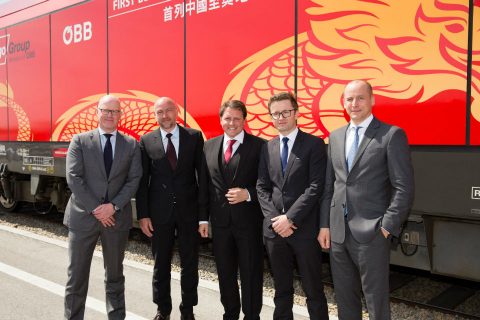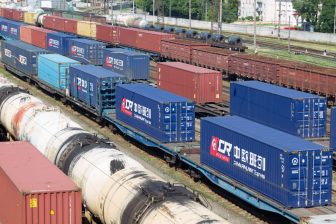
Regular Silk Road train service for Austria and Slovakia
Rail Cargo Group (RCG) – the freight transport division of ÖBB- and DHL Global Forwarding have signed a Memorandum of Understanding (MoU), underlining their efforts to establish regular rail freight services between Austria, Slovakia and China on the New Silk Road.
A new railway service connecting the Austrian capital Vienna with the Chinese freight hub Chengdu was launched mid-April. It was the first direct railway service connecting Austria to the New Silk Road. The parties announced today that it wants to establish regular connections on the Eurasian Corridor along the six countries China, Kazakhstan, Russia, Ukraine, Slovakia and Austria.
Booming trade route
The New Silk Road holds enormous potential for the Austrian economy and direct access to rapidly growing markets, RCG pointed out. “Trade growth between China and Austria is booming. It is all the more important that we offer our customers attractive connections and strong partnerships. With the MoU and the cooperation the RCG and DHL send out a clear signal. Together, we bundle our know-how and network”, explained RCG board member Thomas Kargl.
The first 600-meter container train left the capital of Sichuan province in China, travelling a 9,800 kilometre distance to finally arrive at freight center Vienna South. At the Dobra transhipment terminal on the Ukrainian-Slovak border, the change from broad gauge to standard gauge took place. The current transport time of the journey is twelve to fourteen days, but the aim is to shorten this trip to ten days by the year 2020, RCG said.
Chengdu as a hub
Chengdu offers immense potential for high-end exports between China and Austria, RCG added. “The region specialises in sectors such as biomedicine, automotive, intelligent manufacturing and e-commerce. The Chinese market is particularly attractive to us and Vienna is an important hub for traffic to and from China. Starting from the Vienna South freight center, goods are distributed throughout Europe – between the North Sea, the Mediterranean and the Black Sea”, said Kargl.
Meanwhile, Austria, Hungary and Slovakia are becoming increasingly important countries on the New Silk Road. While Poland has proven to be the main gateway to eastern Europe, Hungary and Slovakia are competing to gain similar importance and share in the large westbound volumes transported from China by rail.





